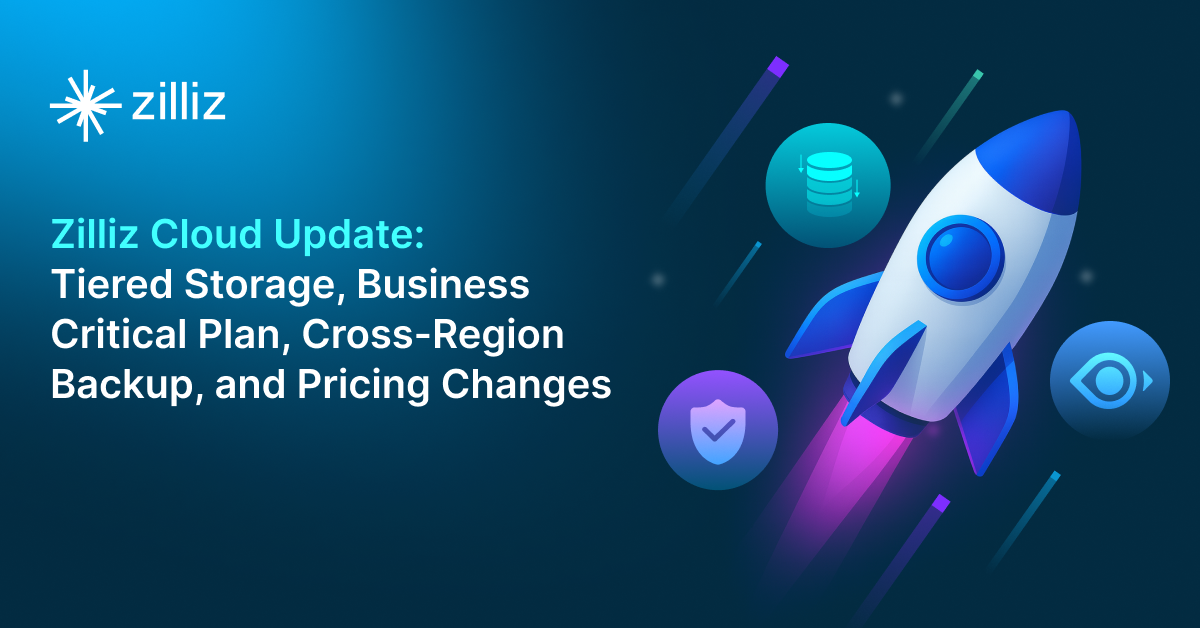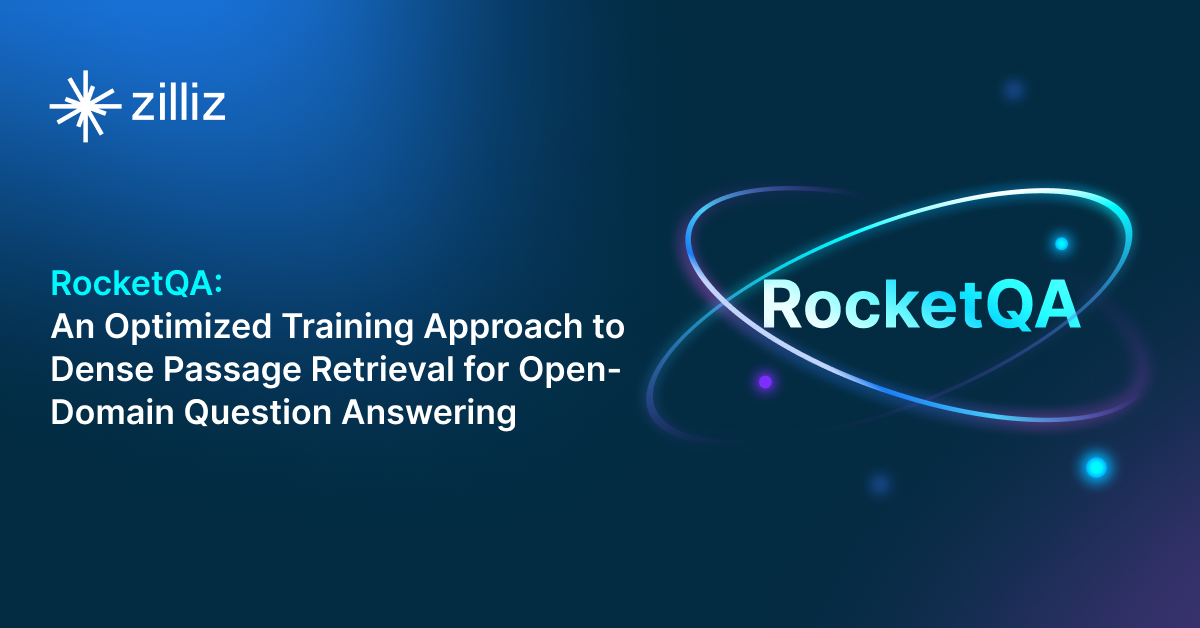SingleStore vs Aerospike Choosing the Right Vector Database for Your AI Apps

What is a Vector Database?
Before we compare SingleStore and Aerospike, let's first explore the concept of vector databases.
A vector database is specifically designed to store and query high-dimensional vectors, which are numerical representations of unstructured data. These vectors encode complex information, such as the semantic meaning of text, the visual features of images, or product attributes. By enabling efficient similarity searches, vector databases play a pivotal role in AI applications, allowing for more advanced data analysis and retrieval.
Common use cases for vector databases include e-commerce product recommendations, content discovery platforms, anomaly detection in cybersecurity, medical image analysis, and natural language processing (NLP) tasks. They also play a crucial role in Retrieval Augmented Generation (RAG), a technique that enhances the performance of large language models (LLMs) by providing external knowledge to reduce issues like AI hallucinations.
There are many types of vector databases available in the market, including:
- Purpose-built vector databases such as Milvus, Zilliz Cloud (fully managed Milvus)
- Vector search libraries such as Faiss and Annoy.
- Lightweight vector databases such as Chroma and Milvus Lite.
- Traditional databases with vector search add-ons capable of performing small-scale vector searches.
SingleStore is a distributed, relational, SQL database management system and Aerospike is also a distributed, scalable NoSQL database. Both have vector search as an add-on. This post compares their vector search capabilities.
SingleStore: Overview and Core Technology
SingleStore has made vector search possible by putting it in the database itself, so you don’t need separate vector databases in your tech stack. Vectors can be stored in regular database tables and searched with standard SQL queries. For example, you can search similar product images while filtering by price range or explore document embeddings while limiting results to specific departments. The system supports both semantic search using FLAT, IVF_FLAT, IVF_PQ, IVF_PQFS, HNSW_FLAT, and HNSW_PQ for vector index and dot product and Euclidean distance for similarity matching. This is super useful for applications like recommendation systems, image recognition and AI chatbots where similarity matching is fast.
At its core SingleStore is built for performance and scale. The database distributes the data across multiple nodes so you can handle large scale vector data operations. As your data grows you can just add more nodes and you’re good to go. The query processor can combine vector search with SQL operations so you don’t need to make multiple separate queries. Unlike vector only databases SingleStore gives you these capabilities as part of a full database so you can build AI features without managing multiple systems or dealing with complex data transfers.
For vector indexing SingleStore has two options. The first is exact k-nearest neighbors (kNN) search which finds the exact set of k nearest neighbors for a query vector. But for very large datasets or high concurrency SingleStore also supports Approximate Nearest Neighbor (ANN) search using vector indexing. ANN search can find k near neighbors much faster than exact kNN search sometimes by orders of magnitude. There’s a trade off between speed and accuracy - ANN is faster but may not return the exact set of k nearest neighbors. For applications with billions of vectors that need interactive response times and don’t need absolute precision ANN search is the way to go.
The technical implementation of vector indices in SingleStore has specific requirements. These indices can only be created on columnstore tables and must be created on a single column that stores the vector data. The system currently supports Vector Type(dimensions[, F32]) format, F32 is the only supported element type. This structured approach makes SingleStore great for applications like semantic search using vectors from large language models, retrieval-augmented generation (RAG) for focused text generation and image matching based on vector embeddings. By combining these with traditional database features SingleStore allows developers to build complex AI applications using SQL syntax while maintaining performance and scale.
Aerospike: Overview and Core Technology
Aerospike is a NoSQL database for high-performance real-time applications. It has added support for vector indexing and searching so it’s suitable for vector database use cases. The vector capability is called Aerospike Vector Search (AVS) and is in Preview. You can request early access from Aerospike.
AVS only supports Hierarchical Navigable Small World (HNSW) indexes for vector search. When updates or inserts are made in AVS, record data including the vector is written to the Aerospike Database (ASDB) and is immediately visible. For indexing, each record must have at least one vector in the specified vector field of an index. You can have multiple vectors and indexes for a single record, so you can search for the same data in different ways. Aerospike recommends assigning upserted records to a specific set so you can monitor and operate on them.
AVS has a unique way of building the index, it’s concurrent across all AVS nodes. While vector record updates are written directly to ASDB, index records are processed asynchronously from an indexing queue. This is done in batches and distributed across all AVS nodes, so it uses all the CPU cores in the AVS cluster and is scalable. Ingestion performance is highly dependent on host memory and storage layer configuration.
For each item in the indexing queue, AVS processes the vector for indexing, builds the clusters for each vector and commits those to ASDB. An index record contains a copy of the vector itself and the clusters for that vector at a given layer of the HNSW graph. Indexing uses vector extensions (AVX) for single instruction, multiple data parallel processing.
AVS queries during ingestion to “pre-hydrate” the index cache because records in the clusters are interconnected. These queries are not counted as query requests but show up as reads against the storage layer. This way, the cache is populated with relevant data and can improve query performance. This shows how AVS handles vector data and builds indexes for similarity search so it can scale for high-dimensional vector searches.
Key Differences
Search Methodology
SingleStore has multiple vector index options: FLAT, IVF_FLAT, IVF_PQ, IVF_PQFS, HNSW_FLAT, HNSW_PQ. This gives you options for different use cases - exact matches to approximate nearest neighbors. Aerospike Vector Search (AVS) only supports HNSW indexes. HNSW is good for many cases, but SingleStore’s broader range of indexing options gives you more control over the speed-accuracy tradeoff in your searches.
Data and Integration
SingleStore has vector search built into its SQL database. You can combine vector searches with standard SQL queries so you can filter results by regular data fields like prices or categories. One database handles both your vector and traditional data needs. Aerospike takes a NoSQL approach, focused on high-performance real-time applications. Its vector search capability (AVS) is newer and currently in Preview, requires early access from Aerospike.
Scalability and Performance
Both databases scale differently. SingleStore has a distributed architecture where you can add nodes as your data grows. Its query processor combines vector and SQL operations in a single query. Aerospike’s AVS processes index building concurrently across all nodes, uses vector extensions for parallel processing. It also pre-hydrates the index cache to improve query performance. Ingestion performance depends heavily on host memory and storage configuration.
Flexibility in Implementation
SingleStore requires vector indices to be created on columnstore tables and single columns storing vector data, currently only supports F32 element type. Aerospike allows multiple vectors and indexes for single records, gives you more flexibility in how you search your data. But Aerospike recommends specific practices like assigning upserted records to specific sets for monitoring.
Ease of Use and Integration
SingleStore may be more appealing to teams who are familiar with SQL, since it uses standard SQL syntax for both vector and traditional queries. This could reduce the learning curve for SQL proficient developers. Aerospike’s NoSQL approach may require more learning for teams used to traditional SQL databases, but could be a plus for teams already working with NoSQL systems.
Use When
SingleStore for applications that need both traditional database operations and vector search in one system. It’s perfect for projects that have structured data alongside vectors, like e-commerce platforms that need product similarity search with price filtering, or content recommendation systems that combine user preferences with content metadata. You can use familiar SQL syntax for vector operations so it’s a great choice for teams with SQL expertise who want to add AI features without managing separate vector databases.
Aerospike is best for high-performance real-time applications where speed matters. Its concurrent index building and pre-hydrated cache makes it great for use cases like real-time recommendation engines or live image similarity search. Having multiple vectors per record is useful for applications that need different vector representations of the same data, like multi-modal AI systems that process both text and images, or systems that use different embedding models for the same content.
Conclusion
The choice between SingleStore and Aerospike comes down to your needs. SingleStore is great for combining traditional database operations with vector search, has multiple index types and SQL integration. Aerospike is for high-performance real-time operations with its HNSW implementation and concurrent processing. Your decision should be based on your existing tech stack, team expertise (SQL vs NoSQL), real-time requirements and whether you need combined queries with traditional data types. Also keep in mind that Aerospike’s vector search is newer and in preview, SingleStore has a more mature vector search solution.
Read this to get an overview of SingleStore and Aerospike but to evaluate these you need to evaluate based on your use case. One tool that can help with that is VectorDBBench, an open-source benchmarking tool for vector database comparison. In the end, thorough benchmarking with your own datasets and query patterns will be key to making a decision between these two powerful but different approaches to vector search in distributed database systems.
Using Open-source VectorDBBench to Evaluate and Compare Vector Databases on Your Own
VectorDBBench is an open-source benchmarking tool for users who need high-performance data storage and retrieval systems, especially vector databases. This tool allows users to test and compare different vector database systems like Milvus and Zilliz Cloud (the managed Milvus) using their own datasets and find the one that fits their use cases. With VectorDBBench, users can make decisions based on actual vector database performance rather than marketing claims or hearsay.
VectorDBBench is written in Python and licensed under the MIT open-source license, meaning anyone can freely use, modify, and distribute it. The tool is actively maintained by a community of developers committed to improving its features and performance.
Download VectorDBBench from its GitHub repository to reproduce our benchmark results or obtain performance results on your own datasets.
Take a quick look at the performance of mainstream vector databases on the VectorDBBench Leaderboard.
Read the following blogs to learn more about vector database evaluation.
Further Resources about VectorDB, GenAI, and ML
- What is a Vector Database?
- SingleStore: Overview and Core Technology
- Aerospike: Overview and Core Technology
- Key Differences
- Use When
- Conclusion
- Using Open-source VectorDBBench to Evaluate and Compare Vector Databases on Your Own
- Further Resources about VectorDB, GenAI, and ML
Content
Start Free, Scale Easily
Try the fully-managed vector database built for your GenAI applications.
Try Zilliz Cloud for FreeKeep Reading

Zilliz Cloud Update: Tiered Storage, Business Critical Plan, Cross-Region Backup, and Pricing Changes
This release offers a rebuilt tiered storage with lower costs, a new Business Critical plan for enhanced security, and pricing updates, among other features.
Milvus/Zilliz + Surveillance: How Vector Databases Transform Multi-Camera Tracking
See how Milvus vector database enhances multi-camera tracking with similarity-based matching for better surveillance in retail, warehouses and transport hubs.

RocketQA: Optimized Dense Passage Retrieval for Open-Domain Question Answering
RocketQA is a highly optimized dense passage retrieval framework designed to enhance open-domain question-answering (QA) systems.
The Definitive Guide to Choosing a Vector Database
Overwhelmed by all the options? Learn key features to look for & how to evaluate with your own data. Choose with confidence.